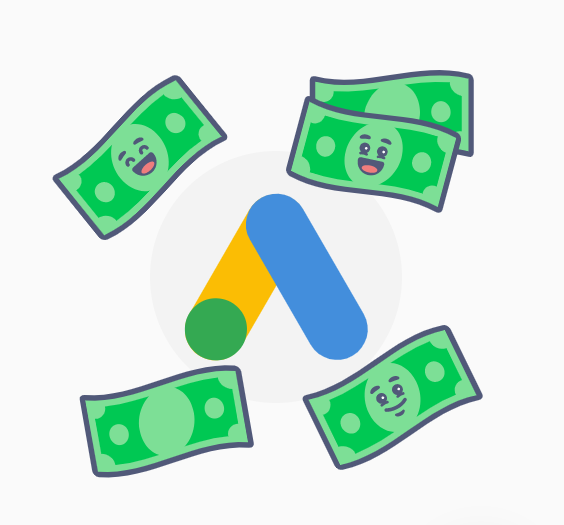5 Google Ads Optimization Techniques
Google Ads campaign budget can go down the drain if the clicks do not bring you revenues. Thus, digital marketing experts advocate optimizing the PPC campaign relentlessly. They suggest that the most obvious thing to achieve an increase in margin is to lower the CPC or cost per campaign. A common way to reduce CPC includes targeting low competition and low-cost keywords. But, the more sustainable solution lies in optimizing Google Ads with some proven tricks and techniques. These techniques are not some fads but proven solutions that work in all conditions and create a far-reaching impact on a brand’s advertising outcomes. Let’s take a look at these Google Ads optimization techniques to boost your revenues.
1. Keep reviewing and refining the keyword list
What, do you think, are keywords? Are these not just questions or phrases that any person enters in a search engine’s search bar? Naturally, the popularity of these phrases or search key phrases changes with time. It has a lot to do with changing the attitudes and perceptions of people. The popularity of keywords tends to change according to people’s changing personas.
So, marketers have to keep reviewing and refining their keyword search strategy.
The constant monitoring of algorithms also helps in choosing the high performing keywords. Refinement and reviewing are to be done region-wise too. Local SEO experts give the required insight to tell the website owners or marketers about the keywords that perform uniquely in a given place like best smartwatch under budget in my area. Thus, the optimization of keywords is to be done keeping the people’s location, usage pattern, and expectations or attitudes in mind. It is not a shortcut or a trick, but a continuous process.
How to use keywords in an optimized way completes the reviewing and refining process. One way of doing it is assigning a different ad group to the unique keywords even though they belong to the same niche. For example, dyslexia college Kent and reading program Kent are focused on the same people, but these need to be assigned different ad groups for better targeting.
2. Select keyword match options while bidding to improve margin
We have mentioned above that lowering the cost is one of the obvious ways of improving margin. CPC lowering is necessary when you want the ad campaign to work great in terms of revenue generation but at budget. This can be achieved by redesigning the bid stack. Google Ads gives advertisers three main keyword match options to select for bidding – broad keyword match, phrase match, and exact match. When you design the bid stack, it is necessary to include all these keyword matches in your basket. Here are some pointers that can help you design the bid stack:
- Exact keyword: Highest in price, because it is most likely to deliver favorable results
- Phrase match: This keyword will include various options that may broaden the results’ scope and deliver a little less relevant audience than the exact keyword users. So, the rule is to assign 75% of the bid amount of Exact Keyword to this phrase match
- Broad match: Since most of the searches will be generic and may not fetch you the relevant audience, the price allotted to this should be just 25% of the amount set for the exact keyword.
There are keyword estimator tools available with AdWords that can help you compose the stack in a relatively automated fashion.
3. Try to assess performance, but after reaching the magic figure of 200
If 200 people click on your ad, then you certainly have done some brilliant work. If the click-through rate or CTR of keywords comes out to be less than 1%, then that keyword is not worth your money; you must delete it from your package.
200 people coming to your ad can give you a fair idea of the conversion rate. If people coming to your ad do not convert, or only 1 or 2 of 200 people bring revenue, this is a waste of bid money. It would help if you went back to the ad testing step to find the area of improvement.
So, what is ad testing in the first place, and how often should it be done? Let’s find out.
4. Ad testing – do it regularly and repeatedly
Ad testing is required to improve the conversion rate. It is also useful in enhancing the Click-through rate. To keep testing, you must have a buffer stock of at least 2-3 ad copies. Thankfully, there is no charge for testing ads. You can then compare the new versions with running one at any point in time, and as many times you desire.
Further, new page testing and its comparison with the existing page is also necessary. It can help find if it is updated content style or format or changed deals that have made the difference to conversion rate. Here the trick is to change the product price or discount structure first. Then, move to change the font and style of content. Sometimes, changes in ‘offer’ only can do the trick. That is the time for the business to make more strategic decisions on production cost, pricing, etc.
5. Schedule ads campaign when the customer sentiment is positive
It is the most important thing and can help you put the engine into full throttle when it is needed. There are some parts of the year when buyer sentiment automatically boosts. It mostly coincides with the festive season. But, this is a broader time frame.
The truth is that buyer sentiment also changes when there is a weekend. So, utilize the Google Ads campaign’s scheduler feature and be there, aggressively, when people are searching. This optimization of timing strategy can help yield results more efficiently and with little sweat.
Optimization is a continuous process and requires an open-minded approach. The most relevant and sustainable strategy is to be consistent in the efforts. Understanding the audience and keeping that understanding updated both are important if you want optimization techniques to work. After all, it is for customer acquisition and retention that you choose to optimize. So, work out the strategies without losing focus from customers, and reap the fruits of a consistent and empathetic approach centered on customer requirements and behavior.


One thought on “5 Google Ads Optimization Techniques”